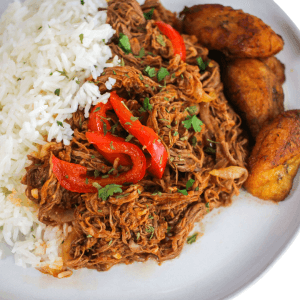Potatoes are a kitchen staple worldwide, but did you know there are dozens of types of potatoes, each with unique characteristics, colors, and flavors? Whether you’re mashing, roasting, or frying, choosing the right potato can make or break your dish. At Stella on Fire Co., we’re peeling back the layers on the most popular types of potatoes, comparing their qualities, and sharing the best ways to use them. Let’s dig into the world of spuds!
What Are the Different Types of Potatoes?
Potatoes come in various shapes, sizes, and textures, broadly categorized by their starch content: starchy, waxy, or all-purpose. These traits affect their color, flavor, and how they fit in recipes. Below, we’ll explore the most common types, highlighting their unique characteristics and culinary uses.
1. Russet Potatoes

- Characteristics: High starch, thick brown skin, fluffy white flesh.
- Color: Brown exterior, bright white interior.
- Flavor: Mild, earthy, and slightly nutty.
- Comparison: Russets are starchier than waxy varieties like red potatoes.
- Best Uses:
- Mashed potatoes (creamy and fluffy).
- French fries (crisp outside, soft inside).
- Baked potatoes (perfectly fluffy with crispy skin).
2. Yukon Gold Potatoes

- Characteristics: Medium starch (all-purpose), thin golden skin, buttery yellow flesh.
- Color: Golden yellow inside and out.
- Flavor: Rich, buttery, and slightly sweet.
- Comparison: Less starchy than Russets but creamier than waxy reds, Yukon Golds bridge the gap between textures.
- Best Uses:
- Roasted potatoes (crisp outside, tender inside).
- Potato salads (hold shape with a velvety bite).
- Scalloped potatoes (rich and creamy layers).
3. Red Potatoes

- Characteristics: Waxy, low starch, thin red skin, firm white flesh.
- Color: Vibrant red skin, creamy white interior.
- Flavor: Mild, subtly sweet, and slightly earthy.
- Comparison: Waxier than Russets or Yukon Golds, red potatoes hold their shape better than starchy varieties.
- Best Uses:
- Boiled potatoes (firm for stews or soups).
- Potato salad (keep texture after cooking).
- Roasted baby reds (colorful and tender).
4. Fingerling Potatoes

- Characteristics: Waxy, small and elongated, thin skin, dense flesh.
- Color: Varies (yellow, purple, red, or tan skins; yellow or purple flesh).
- Flavor: Nutty, earthy, and mildly sweet.
- Comparison: Similar to red potatoes in waxiness but smaller and more flavorful than most all-purpose types.
- Best Uses:
- Roasted fingerlings (crisp and flavorful).
- Side dishes (visually striking halves or wholes).
- Salads (unique shape and taste).
5. Purple Potatoes (e.g., Purple Peruvian)
- Characteristics: Waxy to medium starch, thin purple skin, vibrant purple flesh.
- Color: Deep purple inside and out (rich in antioxidants).
- Flavor: Earthy, slightly nutty, with a hint of sweetness.
- Comparison: More colorful than Yukon Golds, with a denser texture than Russets.
- Best Uses:
- Mashed purple potatoes (stunning color).
- Roasted wedges (vibrant and crisp).
- Chips (eye-catching snacks).
6. Sweet Potatoes

- Characteristics: Medium starch, thick orange or purple skin, soft orange or white flesh.
- Color: Orange, purple, or beige skin; orange or white interior.
- Flavor: Sweet, rich, and slightly fruity.
- Comparison: Sweeter and moister than Russets or reds, with a distinct flavor profile not found in other potatoes.
- Best Uses:
- Baked sweet potatoes (naturally sweet).
- Sweet potato fries (crisp and caramelized).
- Casseroles (creamy and comforting).
7. New Potatoes
- Characteristics: Waxy, small and tender, thin delicate skin, moist flesh.
- Color: Any potato type harvested early (red, yellow, or white).
- Flavor: Fresh, subtle, and slightly sweet.
- Comparison: Less starchy than mature potatoes, with a softer texture than fingerlings.
- Best Uses:
- Boiled new potatoes (buttery with herbs).
- Steamed sides (delicate and simple).
- Spring salads (light and fresh).
Comparing Potato Types: Which One Should You Choose?
Here’s how the types of potatoes stack up based on key qualities:
- Starch Content: Russets (high) vs. Red/Fingerlings (low) vs. Yukon Gold (medium).
- Texture After Cooking: Russets get fluffy, waxy reds stay firm, and Yukon Golds are creamy.
- Color Appeal: Purple and sweet potatoes add vibrancy, while Russets and reds are classic.
- Flavor Profile: Sweet potatoes are sweetest, Russets are mildest, fingerlings are nuttiest.
Choosing the right potato depends on your dish. Starchy potatoes break down for fluffy results, waxy ones hold up in chunks, and all-purpose types adapt to anything.
Potato Perfection with Stella on Fire Co.
At Stella on Fire Co., we’re convinced every potato has its own unique calling. Whether it’s the fluffy Russet or the striking purple spud, knowing your potato varieties can elevate your culinary game. Stella’s seasonings are the ideal companion for your next potato masterpiece. Swing by our shop and grab our GYPSY seasoning—your taste buds will thank you with the best potatoes you’ve ever had!”
Ready to try a new potato type? Visit our website for recipes, cooking hacks, and more from Stella on Fire Co.!
Frequently Asked Questions About Types of Potatoes
What’s the best potato for mashed potatoes?
Russets or Yukon Golds are top picks—Russets for fluffiness, Yukon Golds for creaminess.
Are sweet potatoes really potatoes?
Yes, they’re a type of potato but belong to a different botanical family than regular potatoes.
Which potato type is healthiest?
Purple potatoes and sweet potatoes offer antioxidants, while all types provide nutrients like potassium and fiber.






